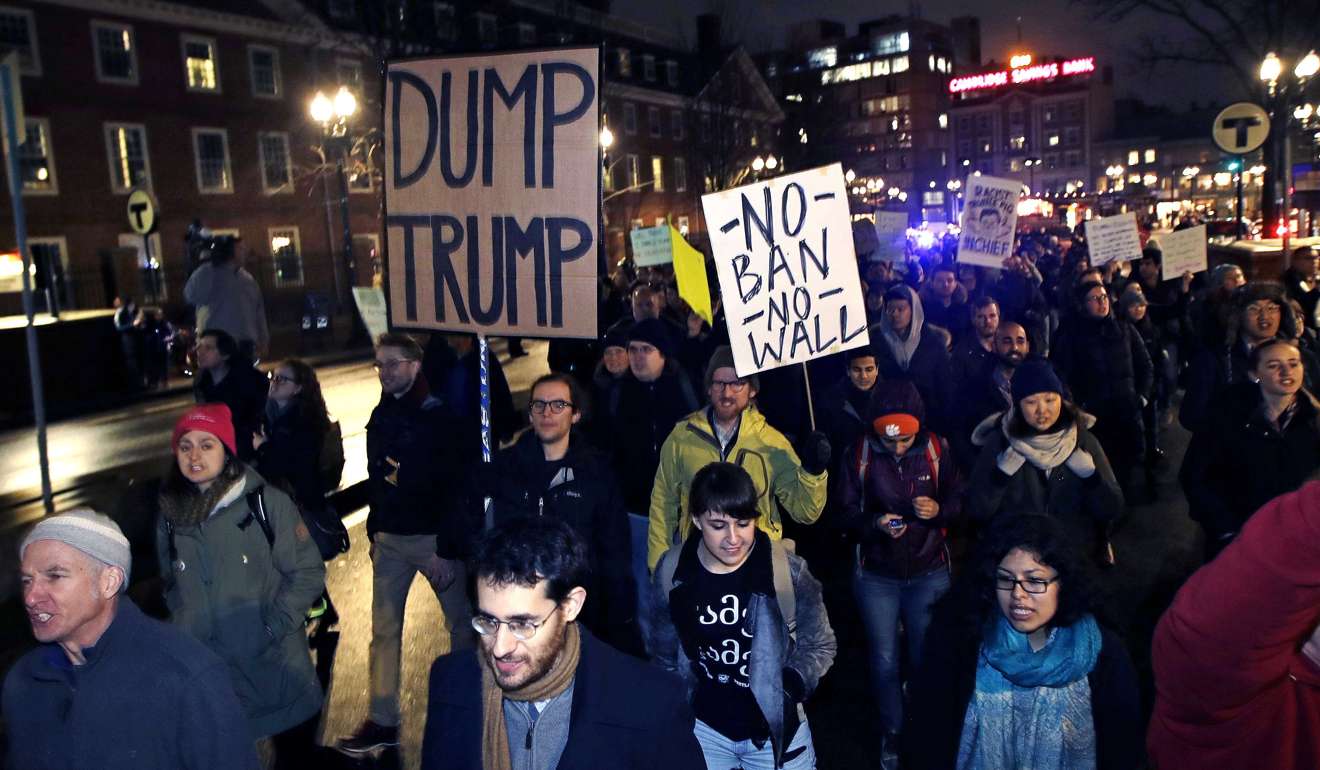
Five ways Hong Kong can fill the moral void in the asylum process amid Trump’s new travel ban
Matthew Bersani and Cáítrín McKiernan say asylum seekers in Hong Kong will be hard hit by the drastic cut in US refugee admissions, but the city can stand up and help to ease their plight
There are at least 9,900 asylum seekers in Hong Kong, more than 3,000 of them women and children. On average, only about 0.6 per cent will be successful in their applications, though many more are deserving of relocation and protection, and yet are sent back into harm’s way.
Hong Kong’s asylum seekers demand better support to help and protect refugee children
US President Donald Trump’s order means even that small percentage are less likely to find a permanent home. This is because Hong Kong screens asylum seekers but does not accept refugees, instead allowing for eventual resettlement in a third country. The predominant country of resettlement used to be the US. Now, resettlement there may become numerically impossible.
Watch: Trump tries again with revised travel ban
Hong Kong’s first legally employed refugee makes the case for allowing asylum seekers to work
In our work with the Justice Centre Hong Kong, we have found that asylum seekers usually have limited understanding of how the complicated application process works and often face language difficulties. On appeal, they are rarely represented by a lawyer. Moreover, they may not apply until they become “out of status” – code for illegally present in Hong Kong.
Hong Kong’s no-work policy is turning asylum seekers into beggars
This means someone who enters the city legally but is fleeing persecution is forced to break the law by overstaying their visa in order to seek asylum. Trump’s order brings further grief for those who have already endured great suffering in their home countries. As lawyers working in Hong Kong, and as US citizens and descendants of immigrants to the US, we are extremely concerned with how the order will harm people here.

‘Another door has been shut for me’: Iranian asylum seeker in Hong Kong after Trump ban
We encourage Hong Kong to stand up and fill the moral void left by our president. Here are some specific procedural steps that Hong Kong might consider.
As [US] lawyers working in Hong Kong ... we are extremely concerned with how the order will harm people here
First, reduce the backlog in the asylum application system by issuing a consolidated policy confirming all applicable grounds for protection. Second, minimise delays in the screening process, while ensuring procedural safeguards. Third, publish redacted appeals decisions. This would encourage consistency and strengthen transparency in the decision-making process. Fourth, permit all asylum seekers to work and volunteer. Their skills may contribute to the growth of Hong Kong. And, finally, create prospects for long-term residency for those awaiting resettlement.
Hong Kong has an opportunity to lead. Now is the time to seize it.
Matthew Bersani and Cáítrín McKiernan are US lawyers practising in Hong Kong. They work closely with the Justice Centre Hong Kong to provide support to refugees in the city. The views expressed here represent the authors’ personal views
